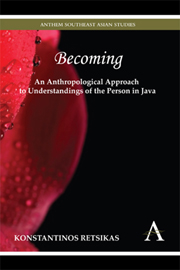Book contents
- Frontmatter
- Contents
- List of Maps and Figures
- Acknowledgements
- Prolegomenon
- Map
- Chapter 1 The Becoming of Place: Moving, Clearing, Inhabiting
- Chapter 2 The Perception of Difference: Embodying, Reversing, Encompassing
- Chapter 3 The Blood of Affinity: Marrying, Procreating, Housing
- Chapter 4 Matters of Scale: Feeding, Praying, Sharing
- Chapter 5 A Pulsating Universe: Annihilating, Enhancing, Magnifying
- Chapter 6 The Marital and the Martial: Gendering, Killing, Oscillating
- Epilogue
- Bibliography
- Index
Chapter 1 - The Becoming of Place: Moving, Clearing, Inhabiting
Published online by Cambridge University Press: 05 November 2012
- Frontmatter
- Contents
- List of Maps and Figures
- Acknowledgements
- Prolegomenon
- Map
- Chapter 1 The Becoming of Place: Moving, Clearing, Inhabiting
- Chapter 2 The Perception of Difference: Embodying, Reversing, Encompassing
- Chapter 3 The Blood of Affinity: Marrying, Procreating, Housing
- Chapter 4 Matters of Scale: Feeding, Praying, Sharing
- Chapter 5 A Pulsating Universe: Annihilating, Enhancing, Magnifying
- Chapter 6 The Marital and the Martial: Gendering, Killing, Oscillating
- Epilogue
- Bibliography
- Index
Summary
The unity of the beginning
Rather than being one definite sort of thing, … a given place takes on the qualities of its occupants, reflecting these qualities in its own constitution and description and expressing them in its occurrence as an event: places not only are, they happen.
(Casey 1996, 27; italics in the original)First time I visited Alas Niser was well into the fasting month of Ramadan of 1998. Accompanied by my research assistant, I hopped on one of the many yellow minibuses packed with an assortment of people, produce, and commodities that connect downtown Probolinggo with its southern periphery. It was a hot mid-afternoon right after the call for prayer, and our co-passengers, tired from work and the fast, were returning home for a quick rest. The minibus was travelling fast, overtaking schoolchildren in their bicycles and uniformed civil servants in their Honda motorcycles, over a bumpy road that had only been laid with asphalt in the early 1980s. The ticket collector, a young man over-hanging from the side door, was shouting the name of our destination while gesticulating wildly as we passed through the densely populated neighbourhoods of the city centre. The latter soon gave way to a kilometre-long stretch of irrigated rice fields planted with bright green seedlings, interspersed here and there with a few white-washed brick houses and a newly built mosque featuring a shiny, light blue dome.
- Type
- Chapter
- Information
- Publisher: Anthem PressPrint publication year: 2012



